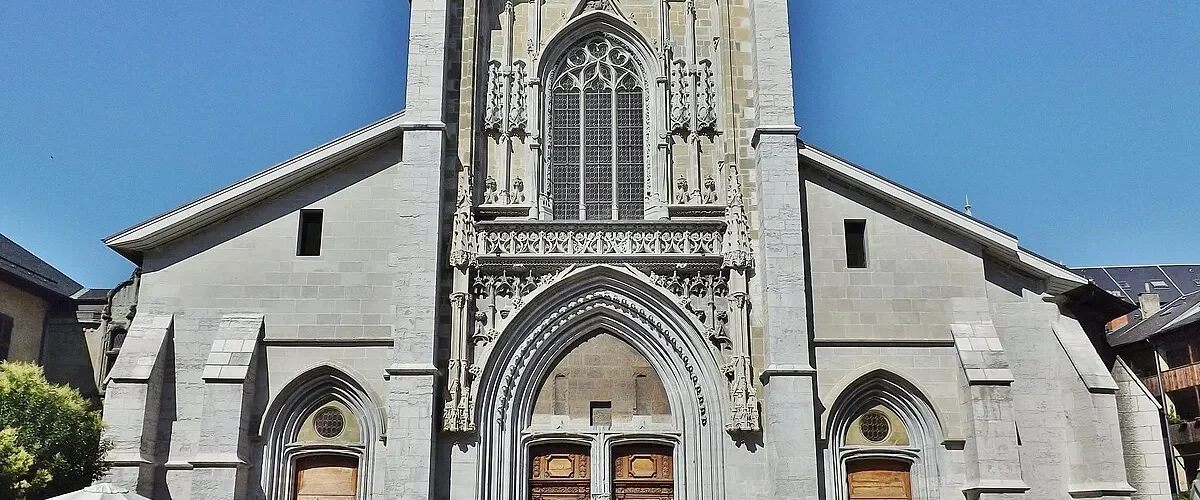Introduction
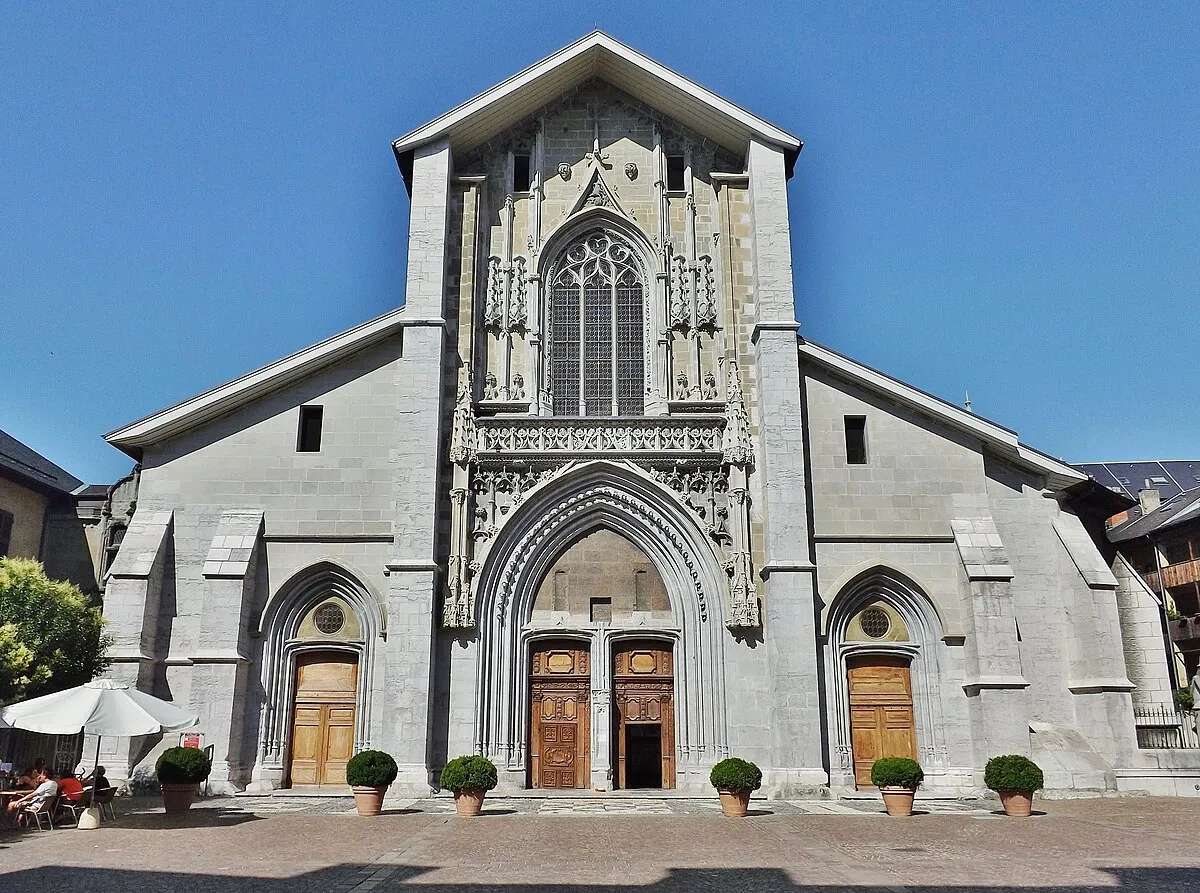
The Cathedral of Saint Francis of Sales of Chambéry is the metropolitan cathedral No. 1 of the Archdiocese of Chambéry, Maurienne and Tarentaise , in the French department of Savoie . Its location is in the historic center of the city of Chambéry , between Place Saint-Léger and Rue de la Croix-d’Or. The square of the parvis is called Place Métropole.
This monument has been classified as a historic monument sinceAugust 9, 1906.

Initially a modest Franciscan convent chapel whose construction began around 1420, then a church adjoining their convent (the Gothic cloister now houses the Savoy museum ), it expanded and was consecrated onJune 15, 1488and completed in 1585 . From the 15th century , the Turin shroud was sometimes transferred to this Cordeliers church where sumptuous services took place during the solemn displays of the relic which attracted a great eagerness of pilgrims . Built on the Place Métropole for the Franciscan order, the people of Chambéry called it “the Metropolis” .
The Cordeliers church was desecrated during the Revolution , but the monument escaped the wrath of the demolitionists. On the occasion of the creation of the bishopric of Chambéry , the Saint-François church became a cathedral in 1779 under the invocation of the Annunciation of the Blessed Virgin Mary and Blessed Amédée ( Amédée IX of Savoy ). The reestablishment of the bishopric of Chambéry during the concordat of 1801 was the opportunity for the new bishop René des Monstiers de Mérinville to place the cathedral church under the invocation of Saint François de Sales in 1802 .
The restoration of the molasse stone façade was completed in 2009 following work begun in 2006. It required six stonemasons and cost 1,325,171 euros, 100% financed by the State .
Reconnecting with its past, the cathedral was offered by the diocese of Turin in 2014 a copy of the Shroud of Turin visible in the Chapel of the Resurrection, behind the choir, with educational panels accompanying it to explain its history and reading.
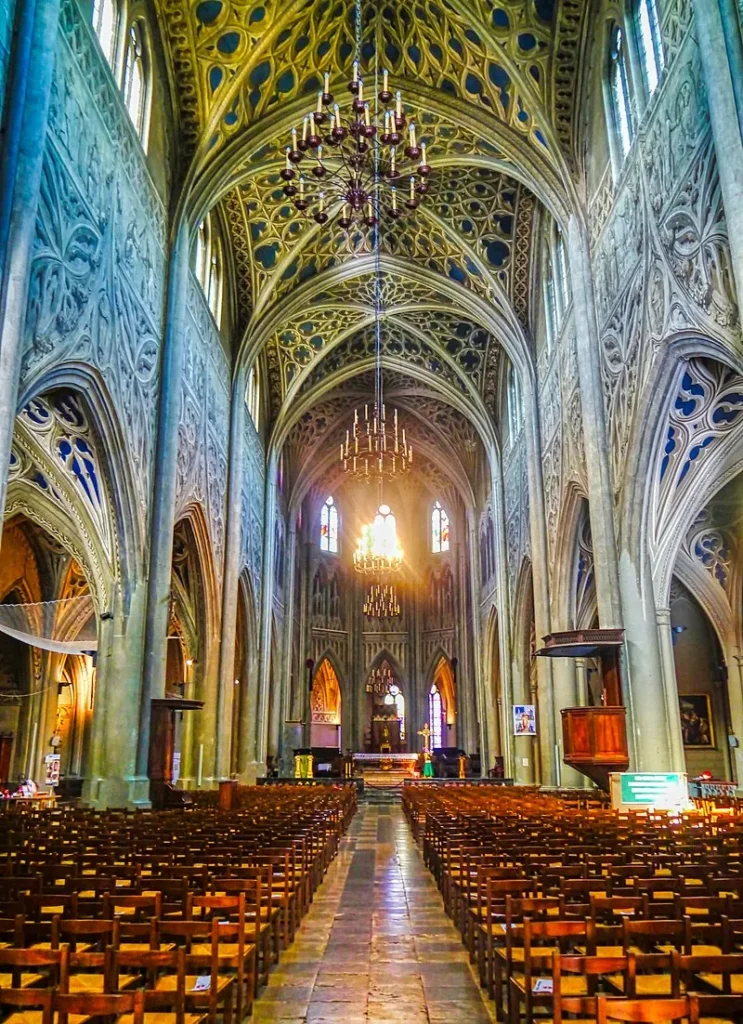
The Main façade built in 1522, in flamboyant Gothic with a simplicity typical of a Franciscan church, clearly shows the structure of the building: a fairly high central nave (23 m under vaults), flanked by side aisles. The construction does not have the grandeur of other cathedrals for technical reasons: the subsoil being very marshy, tradition reports that it was necessary to plant no less than 30,000 larch piles . From the inside, the volume is however quite impressive in terms of length, more than 70 m , by 34 m wide.
There is no transept . The most striking feature is the architecture of the aisle and side chapels on the south side (on the right looking towards the choir ). A single, rather complex vault covers both the chapel and the aisle. The chapels are polygonal, which gives an unusual succession of corner buttresses on the outside . They continue to the axial chapel of the apse , nine in total.
On the north side, the two chapels of the apse are blind, as is the next one which is the Treasury room , at the base of the bell tower, the only vestige of a Dominican convent from the 13th century (this treasure contains a polychrome wooden Nativity from the 15th century , a pyxis in Limousin champlevé enamel from the 13th century and the centerpiece, an ivory diptych from the 12th century of Byzantine inspiration). Then come the side chapels of rectangular plan and of shallow depth, backing onto the cloister.
Trompe l'oeil Paintings
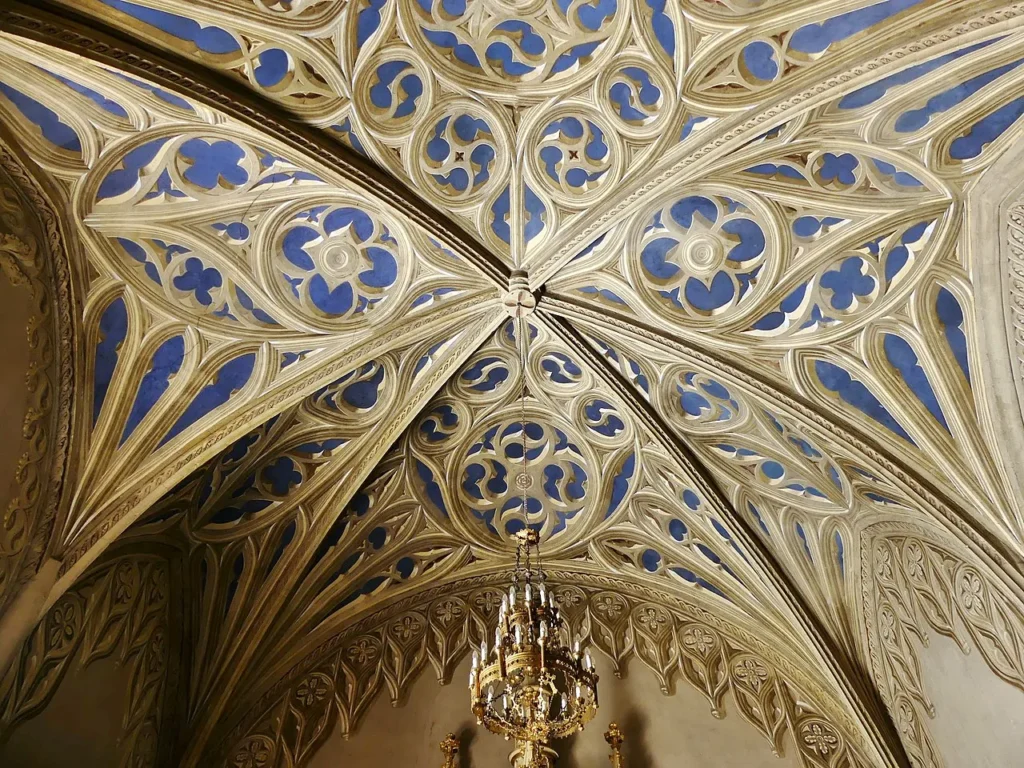
The Cathedral houses the largest collection of trompe-l’oeil paintings in Europe (nearly 6,000 m2 ) . After the Piedmontese revolution of 1821 , Duke Charles-Félix of Savoy brought in many artists. Trompe-l’oeil paintings were already one of Chambéry’s specialties. Fabrizio Sevesi created a first trompe-l’oeil in the cathedral choir in 1810. Then between 1834 and 1835, the “official” artist Casimir Vicario painted all the walls and vaults in the flamboyant Gothic style.
On the vaults, he makes the sky appear through the Gothic tracery . Finally, in 1885, Bernard Sciolli painted, in a different style, the choir, the ambulatory , the chapels of the right aisle and the canonical chapel. Later restorations will reinstate the paintings of Sevesi in the choir, and of Vicario elsewhere. Only the canonical chapel retains the decorations of Sciolli.
Organ
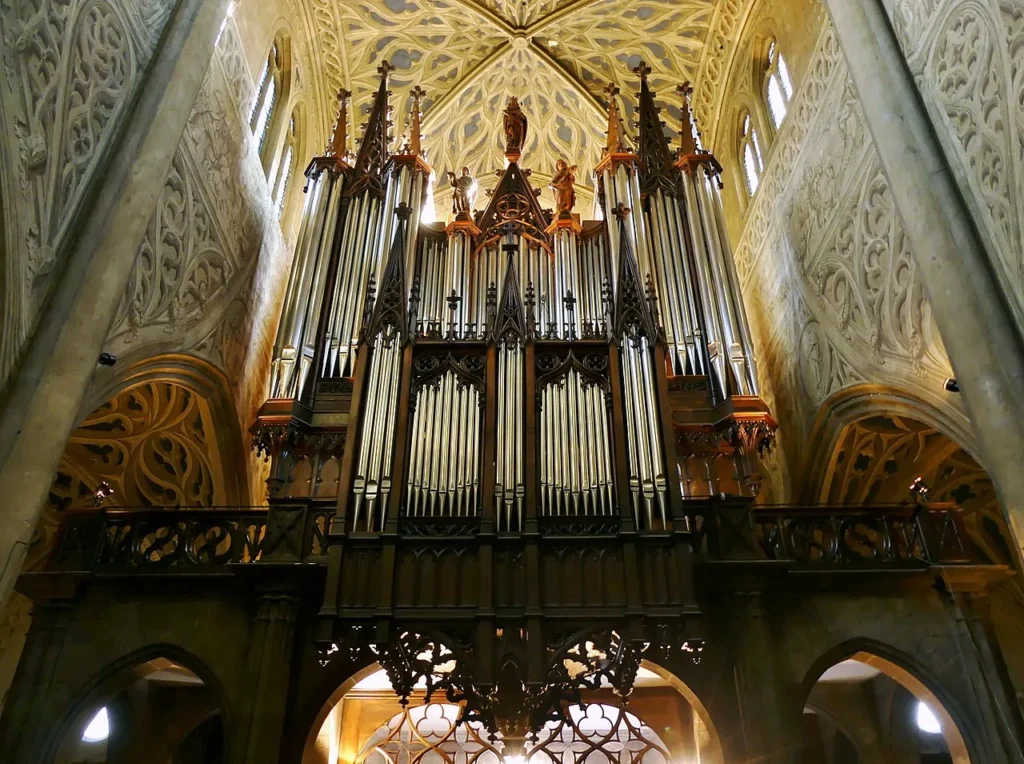
The Cathedral organ is listed as a historical monument. It was built in 1847 by the organ builder Augustin Zeiger . This Alsatian by origin designed this instrument following the principles of the German theorist Töpfer who advocated the use of pipes whose diameter calculations make it possible to enrich the medium, which is a more perceptible sound region for listeners. Augustin Zeiger built a romantic style organ as was practiced in the 19th century . This organ was the subject of many inventions by this craftsman.
He installed a complex expressive box, a multiplier lever for the separation of the valves and a modular “human voice”. A year later, in 1848, he decided to enlarge the organ by adding a gigantic back positive, the first 56-note keyboard . For 20 years , the instrument did not undergo any modifications until that of Augustin Zeiger’s nephew, who restored the organ while making numerous modifications.
The Instrument underwent a major modification in 1895 by the Lyon manufacturer Charles Michel – Merklin , who equipped the organ with a Barker pneumatic machine to compensate for the hard touch of the keyboards. The following century, in 1960, a market for the restoration of the instrument was launched. It was the Parisian organ builder Victor Gonzalez who won the contract, the craftsman having no competitors. He electrified the transmission of the keyboards while remaining in a neo-classical spirit. The instrument was classified as a historic monument in 1988.
The Instrument was completely restored in Zeiger’s spirit by the instrument maker Pascal Quoirin in 2004.
Feast Day
Feast Day : 24th January
The Oblates of Saint Francis de Sales are one of several religious congregations in the Catholic Church founded under his patronage. On January 8, 1661, Pope Alexander VII beatified St. Francis de Sales, and canonized him on April 19, 1665. His feast day is celebrated on January 24.
Church Mass Timing
Tuesday : 9 a.m.
Wednesday : 9 a.m.
Thursday : 9 a.m.
Friday : 9 a.m.
Saturday : 9 a.m.
Sunday and Holidays : 11 a.m.
Church Opening Time:
Monday : 8:45 am–12 pm, 2 pm –6 pm
Tuesday : 8:45 am–12 pm, 2 pm –6 pm
Wednesday : 8:45 am–12 pm, 2 pm –6 pm
Thursday : 8:45 am–12 pm, 2 pm –6 pm
Friday : 8:45 am–12 pm, 2 pm –6 pm
Saturday : 8:45 am–12 pm, 2pm–6 pm
Sunday : 9 am–12:15 pm, 3pm–8:15 pm
Contact Info
Address:
Pl. Métropole, 73000 Chambéry, France
Phone: +33479332500
Accommodations
Connectivities
Airway
Cathédrale Saint-François-de-Sales,France to Aéroport Chambéry Savoie Mont Blanc, France distance 16 min (12.3 km) via N201.
Railway
Chambery – Challes-les-Eaux to Cathédrale Saint-François-de-Sales, france distance 6 min (1.8 km) via Quai du Jeu de Paume.

